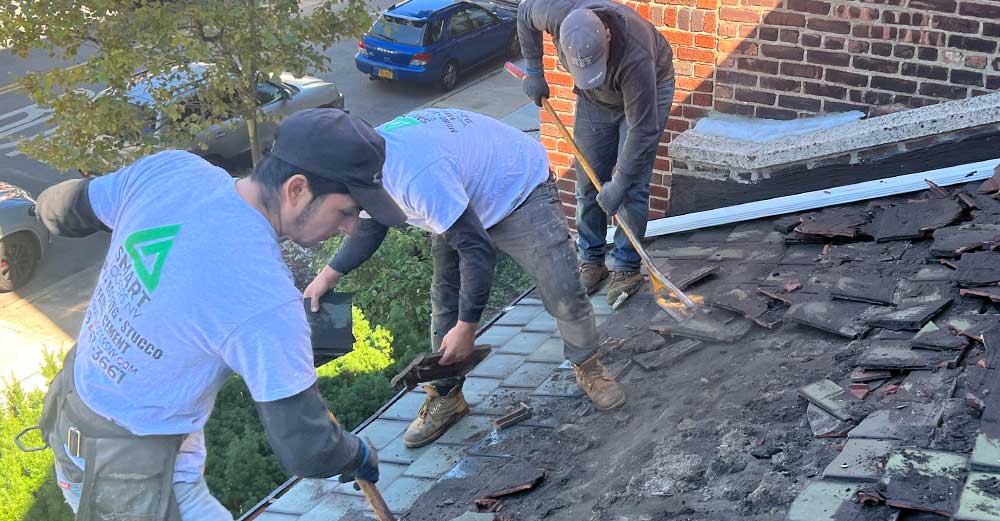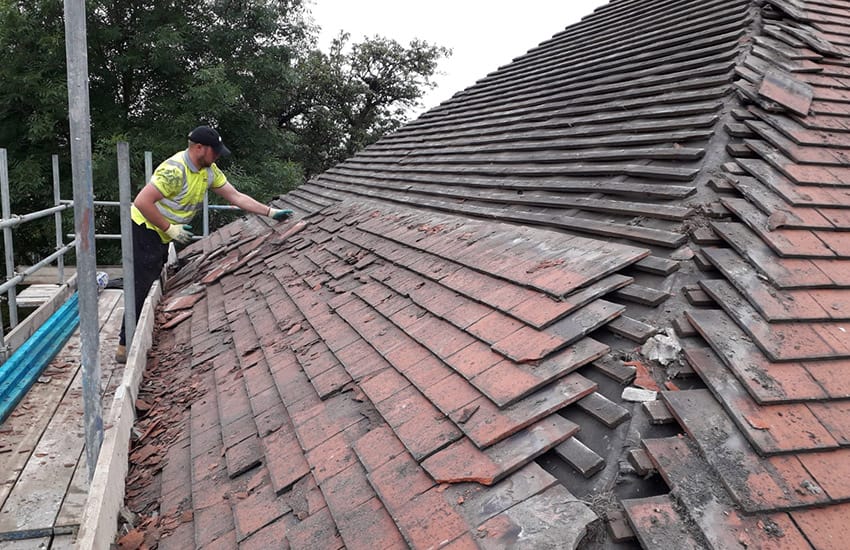Roof Repair Oahu: Expert Roof Repair Works for Lasting Security
Roof Repair Oahu: Expert Roof Repair Works for Lasting Security
Blog Article
Comprehending the Different Kinds Of Roofs: A Comprehensive Overview for Homeowners
With a selection of alternatives-- varying from the traditional gable to the contemporary level-- each kind provides unique advantages and obstacles that need to straighten with the home owner's particular demands and environmental considerations. As we explore the details of numerous roofing system types, it ends up being evident that one dimension does not fit all; the ideal option might amaze you.
Gable Roofing Systems
Saddleback roofs, characterized by their triangular form, are amongst one of the most preferred roof designs because of their simplicity and performance in shedding water and snow. This layout features 2 sloping sides that satisfy at a ridge, enabling reliable drain and minimizing the danger of water accumulation. The steep pitch generally linked with saddleback roofs enhances their ability to manage heavy rainfall, making them appropriate for various environments.
In addition to their useful advantages, saddleback roofs supply aesthetic flexibility. They can be adapted to different building designs, from standard to modern-day homes. The layout can additionally accommodate additional features such as dormer home windows, which enhance all-natural light and ventilation in the attic room.
Furthermore, saddleback roofs provide sufficient space for insulation, adding to energy performance. Property owners can pick from a selection of roof covering materials, consisting of asphalt tiles, steel, and ceramic tiles, better improving modification choices.
Despite their advantages, saddleback roofs might call for extra assistance in areas vulnerable to high winds or heavy snowfall. Generally, the gable roofing system remains a popular choice because of its blend of functionality, sturdiness, and visual allure.
Flat Roofs
Flat roof coverings are often acknowledged for their minimal design and practical applications, especially in industrial and commercial setups (oahu roofing). These roofing systems feature a straight or almost horizontal surface, which enables simple construction and flexible room use. While they might lack the visual appeal of pitched roofs, level roofing systems provide countless advantages, specifically in city environments where optimizing room is critical
Among the main advantages of level roofs is their ease of access. Home owners can use the roof covering space for different objectives, such as roof yards, balconies, or photovoltaic panel installations. Additionally, flat roofing systems are normally a lot more cost-efficient to preserve and install compared to their sloped counterparts, as they need fewer materials and labor.
Nevertheless, flat roofing systems do present specific difficulties. Appropriate drain is vital to protect against water merging, which can bring about leakages and architectural damages. Therefore, selecting premium waterproofing materials and normal examinations are important for making sure long life. Usual products utilized for flat roofs consist of built-up roofing (BUR), modified asphalt, and single-ply membrane layers, each offering distinct advantages. Generally, level roofing systems offer as a practical and adaptable option for numerous property owners and businesses alike.
Hip Roofings
Hip roofing systems are identified by their sloped sides that assemble on top, forming a ridge. This layout is distinct from gable roofing systems, as all four sides of a hip roofing slope downwards towards the wall surfaces, offering a much more steady structure. The angle of the slopes can differ, permitting convenience in building aesthetics and performance.
Among the primary advantages of hip roofing systems is their capability to withstand heavy winds and adverse weather condition problems. The sloped surfaces allow much better water drain, reducing the risk of leaks and water damage. Furthermore, hip roofs offer boosted attic space, which can be utilized for storage and even exchanged habitable areas.
Nonetheless, constructing a hip roof can be much more intricate and expensive than simpler roofing system types, such as saddleback roofs. The extra product and labor associated with developing the inclines and making sure correct structural integrity can result in higher costs. Regardless of these downsides, several homeowners prefer hip roof coverings for their resilience, visual appeal, and possibility for power efficiency.
Mansard Roof Coverings
Mansard roofing systems, typically recognized by their distinct four-sided layout, feature two slopes on each side, with the reduced slope being steeper than the top. This building design, originating from France in the 17th century, is not just visually appealing yet useful, as it optimizes the usable area in the upper floorings of a building. The high reduced incline enables more headroom, making it an optimal selection for lofts or attics, which can be transformed into living areas.
Mansard roofs are identified by their convenience, accommodating numerous architectural check that designs, from standard to modern-day. They can be built with different materials, including asphalt roof shingles, slate, or metal, offering home owners with a variety of choices to fit their budgets and preferences. Furthermore, the layout permits the assimilation of dormer home windows, boosting natural light and air flow in the top degrees.
However, it is necessary to consider the potential disadvantages. Mansard roofs might require more maintenance as a result of the intricacy of their layout, and their steep inclines can be challenging for snow and rain runoff. On the whole, mansard roofing systems incorporate elegance with practicality, making them a prominent choice amongst property owners seeking distinctive building attributes.
Lost Roofings
As house owners significantly look for simplicity and functionality in their building designs, shed roof coverings have become a prominent choice. Identified by a single sloping plane, a shed roof covering provides a minimalist aesthetic that enhances different home designs, from modern to rustic.
One of the key benefits of a shed roof is its straightforward building and construction, which usually equates to reduce labor and material costs. This style permits reliable water drain, minimizing the risk of leaks and water damages. Additionally, the upright incline provides adequate space for skylights, enhancing all-natural light within the interior.
Dropped roofings additionally use adaptability in regards to use. They can be effectively incorporated into enhancements, garages, or outdoor structures like structures and sheds. Additionally, this roofing system design can accommodate various roof covering products, including steel, asphalt shingles, and even environment-friendly roof coverings, aligning with green campaigns.
However, it is important to think about local environment problems, as hefty snow tons may require modifications to the roofing's angle or framework. In general, shed roofs present a functional and visually pleasing choice for house owners seeking you can try here to take full advantage of capability without jeopardizing style.
Verdict


Gable roofs, characterized by their triangular shape, are amongst the most preferred roofing styles due to their simplicity and performance in losing water and snow. oahu roofing. The high pitch commonly connected with gable roofing systems enhances their ability to manage hefty precipitation, making them suitable for different climates
While they may lack the aesthetic allure of pitched roofs, flat roofing systems use countless benefits, specifically in city environments where making best use of room is critical.

Report this page